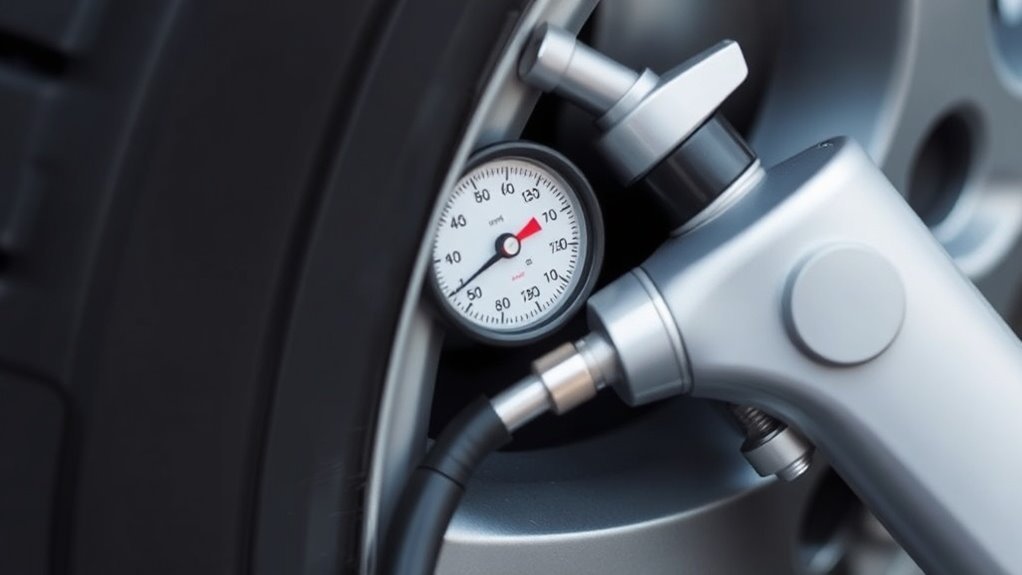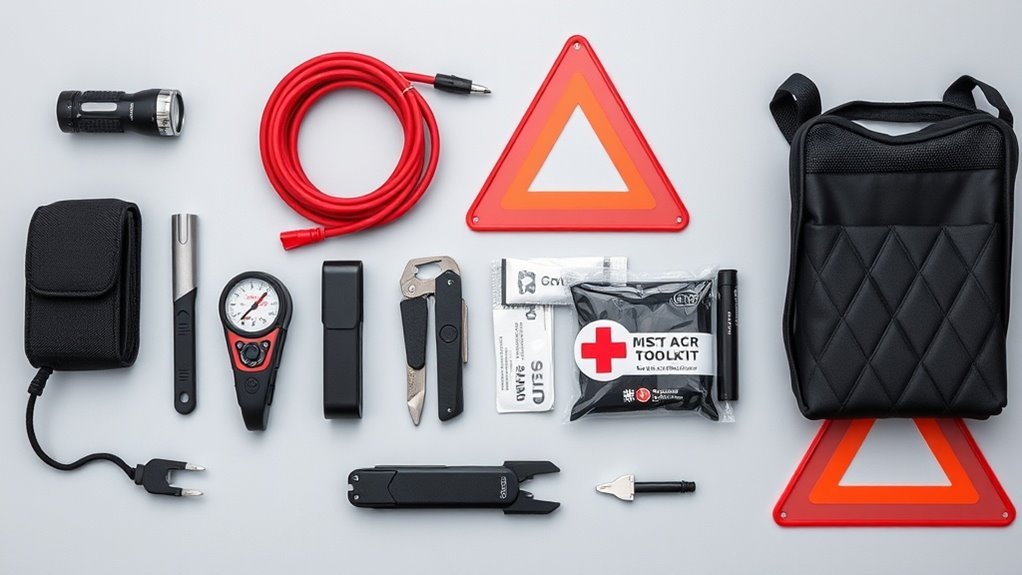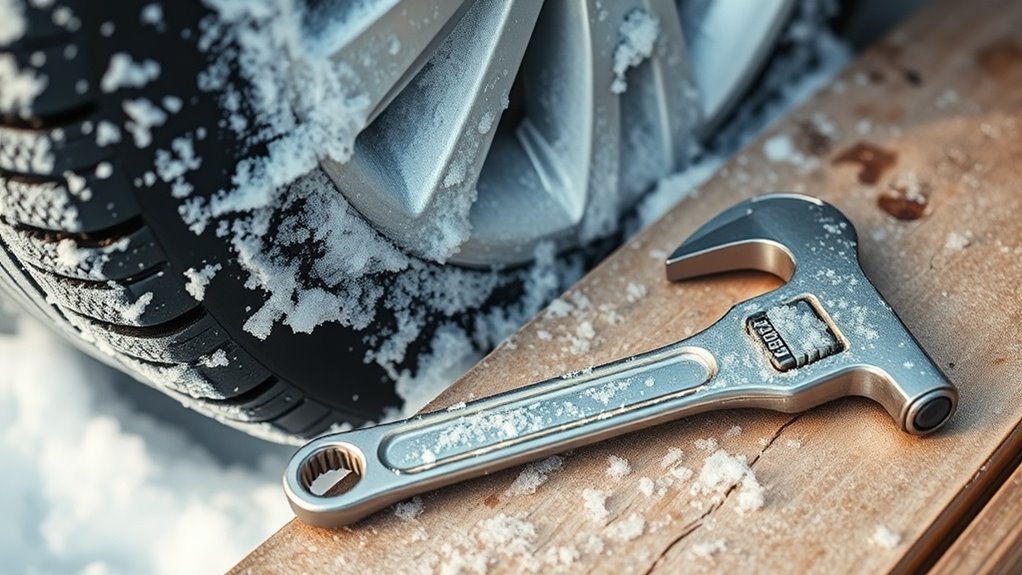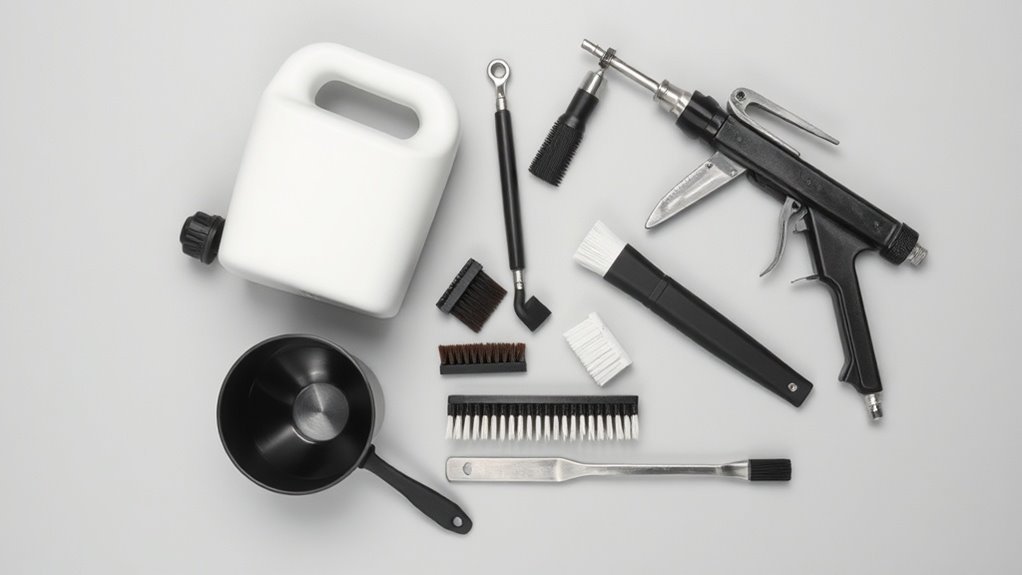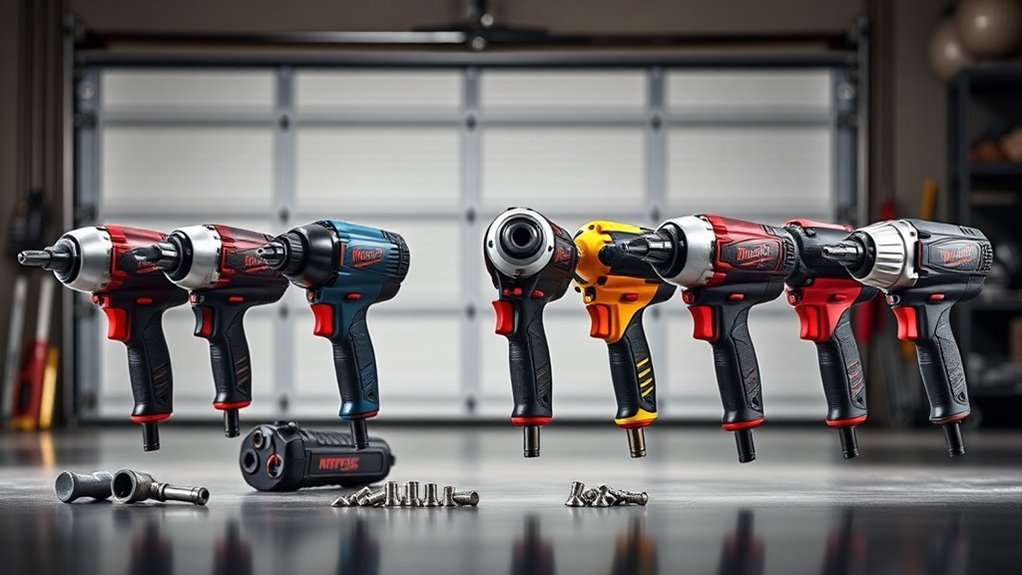Tire Inflators: How PSI and Flow Rate Work
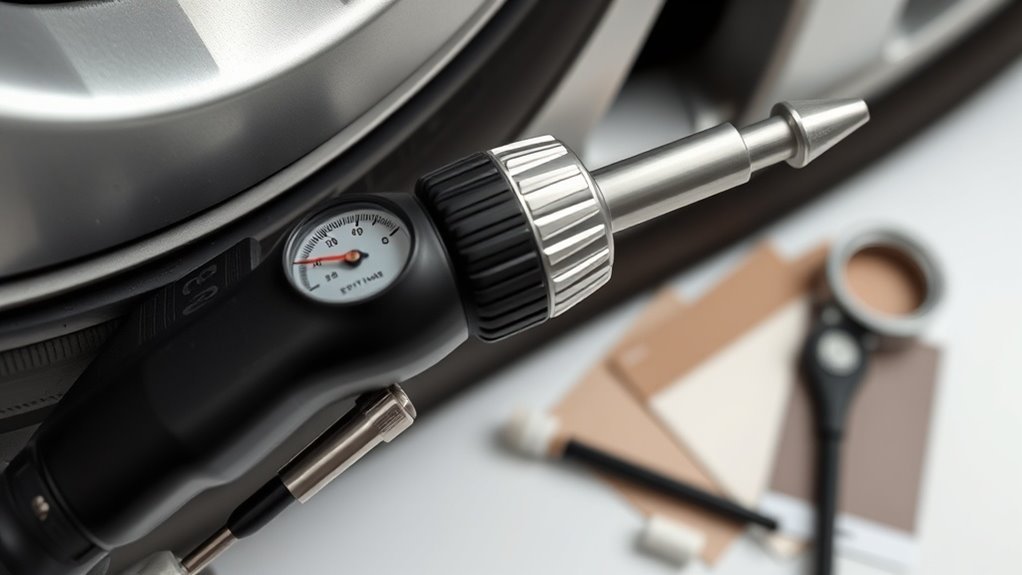
When using tire inflators, understanding PSI (pounds per square inch) is essential for safety and performance. Proper PSI guarantees peak traction and fuel efficiency, while flow rate impacts how quickly your tire inflator fills your tires. A higher flow rate means faster inflation but check PSI regularly to avoid over-inflation. Always maintain your tires and choose the right inflator for your needs. There’s a lot more to know about tire maintenance and performance that can benefit you.
Key Takeaways
- PSI, or pounds per square inch, measures tire inflation and affects vehicle performance, handling, and fuel efficiency.
- Flow rate in tire inflators indicates how quickly air can be pumped into tires, impacting efficiency during inflation.
- Higher flow rates fill tires faster, making the inflator more efficient for users needing quick inflation.
- It’s crucial to monitor PSI while inflating to avoid over-inflation, which can lead to uneven wear and ride issues.
- Digital gauges in inflators provide accurate PSI readings, promoting safer and more effective tire maintenance.
Understanding Tire Pressure Basics
Tire pressure plays an important role in your vehicle’s performance and safety. When your tires are properly inflated, they guarantee ideal traction, handling, and fuel efficiency.
Under-inflated tires can lead to increased wear, reduced fuel economy, and even blowouts, while over-inflated tires might cause uneven wear and a harsher ride. Understanding the recommended tire pressure for your vehicle, typically found in the owner’s manual and on a sticker inside the driver’s door, is vital. It’s also essential to recognize that maintaining proper tire pressure is critical for maximizing your vehicle’s overall safety on the road.
It’s a good idea to check your tire pressure regularly, especially before long trips or when the seasons change, as temperature fluctuations can affect pressure. Keeping your tires at the right level helps maintain performance and prolongs tire life, so don’t overlook this important maintenance task.
The Importance of PSI in Tire Maintenance
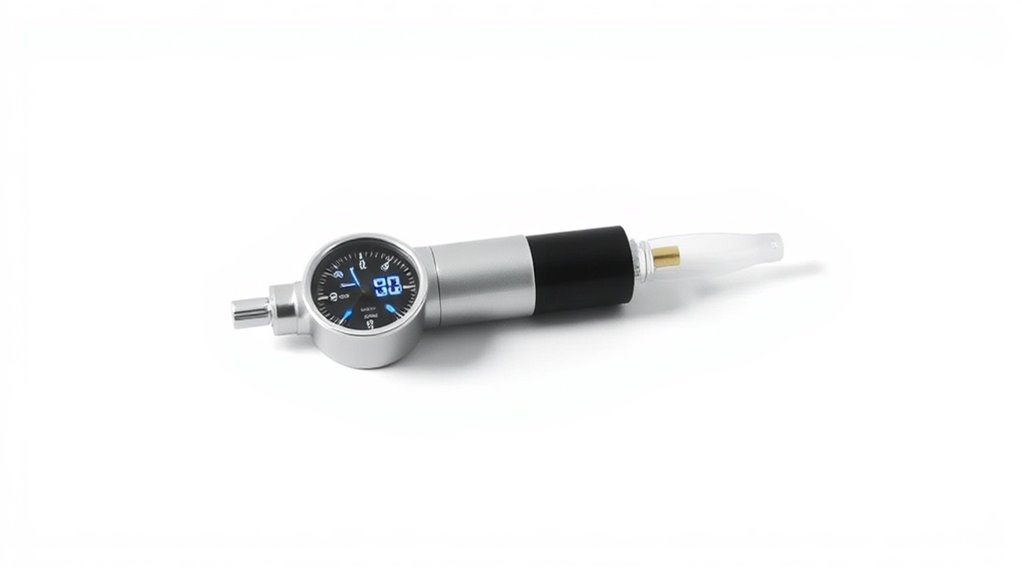
Maintaining the correct PSI (pounds per square inch) is essential for peak tire performance, as it directly impacts your vehicle’s safety and efficiency. Proper tire pressure helps you avoid blowouts, enhances fuel economy, and maximizes tire lifespan.
Correct tire PSI is vital for safety, efficiency, and longevity, ensuring optimal vehicle performance and reducing risks on the road.
Here are three key reasons why PSI matters:
- Safety: Incorrect tire pressure can lead to reduced traction, affecting handling and increasing the risk of accidents.
- Fuel Efficiency: Over or under-inflated tires can decrease fuel efficiency, costing you more money at the pump.
- Tire Longevity: Maintaining the right PSI prolongs the life of your tires, saving you from premature replacements.
Regularly checking tire pressure is an easy way to guarantee you’re driving safely and efficiently.
Don’t overlook this critical aspect of tire maintenance!
What Is Flow Rate and Why Does It Matter?
When you’re checking your tire pressure, it’s also important to take into account flow rate, particularly when using a tire inflator. Flow rate refers to the volume of air your inflator can provide within a specific time frame, usually measured in liters per minute (L/min). A higher flow rate means you can inflate tires faster, saving you time, especially during emergencies. Conversely, a lower flow rate might prolong the inflation process.
| Flow Rate (L/min) | Inflation Time (minutes) |
|---|---|
| 10 | 5 |
| 5 | 10 |
| 2 | 25 |
Understanding flow rate helps you choose the right inflator to match your needs, ensuring ideal tire maintenance.
How to Measure and Monitor PSI
Measuring and monitoring PSI (pounds per square inch) is essential for ensuring your tires are in ideal condition, as properly inflated tires can enhance fuel efficiency and improve safety.
Here’s how you can easily measure PSI and keep an eye on it:
- Use a Tire Pressure Gauge: Invest in a reliable gauge, whether digital or manual, for accurate readings.
- Check Cold Tires: Measure your tire pressure when tires are cold, ideally before driving, to get the most accurate PSI.
- Adjust Accordingly: If your PSI is below the recommended level (found in your owner’s manual), inflate your tires to the specified pressure.
Regular checks can save you money on gas and extend tire life, keeping you safer on the road.
Selecting the Right Tire Inflator for Your Needs
Choosing the right tire inflator can make a significant difference in how efficiently you maintain your vehicle’s tires.
First, consider your typical driving conditions and how often you need to inflate your tires. If you travel long distances or off-road, look for a portable, high-PSI inflator. For occasional use, a smaller, compact model may suffice.
Next, think about the flow rate—higher flow rates will fill your tires faster. You’ll also want a digital gauge for easy monitoring. Look for added features like automatic shut-off and built-in lights for convenience.
Consider a tire inflator with a high flow rate and digital gauge for efficient, convenient tire maintenance.
Finally, don’t forget to check the cord length and hose, ensuring they reach your tires comfortably. Selecting the right inflator tailored to your needs can save you time and effort.
Comparing Different Types of Tire Inflators
There are several types of tire inflators available, each designed to meet different needs and preferences.
Understanding the options can help you choose the right one for you. Here are three common types:
- Portable Electric Inflators: These are compact and plug into your car’s power outlet, making them easy to store and use on-the-go.
- Battery-Powered Inflators: Ideal for those who want ultimate portability without relying on a power source; just charge them and you’ll be ready.
- Manual Tire Pumps: These require physical effort but don’t depend on electricity or batteries, making them a reliable choice in emergencies.
Common Mistakes in Tire Inflation
While it may seem straightforward, tire inflation often leads to common mistakes that can affect your vehicle’s performance and safety. One common error isn’t checking your tire pressure when it’s cold; doing so can yield inaccurate readings.
Another mistake is overinflating your tires, which can lead to a harsher ride and reduced traction. You might also forget to include the spare tire in your checks, leaving you unprepared for emergencies.
Additionally, relying solely on visual inspections can be misleading, as tires can look fine even when they’re under or overinflated.
Finally, many people neglect to adjust PSI based on load changes, which can severely impact handling and fuel efficiency.
Avoiding these mistakes guarantees your tires perform at their best.
The Relationship Between Flow Rate and Inflation Time
When inflating your tires, the flow rate of your tire inflator plays a vital role in how quickly you can achieve the desired pressure.
A higher flow rate means faster inflation, while a lower rate can stretch out the process.
Understanding this connection can help you choose the right inflator for your needs.
Flow Rate Explained
Understanding flow rate is crucial for comprehending how quickly a tire inflator can fill your tires. The flow rate is measured in liters per minute (L/min) or cubic feet per minute (CFM), impacting how fast air enters your tire.
Here are three key aspects of flow rate:
- Higher flow rates mean faster inflation times, making it easier to manage unexpected situations.
- Lower flow rates may prolong the inflation process, which can be frustrating in urgent scenarios.
- Matching flow rates with your tire’s requirements is essential for efficient inflation and maximum performance.
Impact on Inflation Speed
The speed at which you can inflate a tire largely hinges on the flow rate of your inflator. A higher flow rate means more air’s pushed into the tire per minute, reducing the total time you spend pumping.
When you’re in a hurry or dealing with low-pressure tires, this efficiency can be vital. For instance, an inflator with a flow rate of 2.0 CFM (cubic feet per minute) inflates a tire considerably faster than one with a 1.0 CFM rating.
However, remember that flow rate isn’t the only factor; the initial PSI and tire size also play roles.
Still, focusing on flow rate when choosing an inflator can lead to quicker, hassle-free tire inflation.
Safety Considerations When Using Tire Inflators
Although using tire inflators can seem straightforward, safety should always be your top priority.
Using tire inflators may appear simple, but prioritizing safety is essential for a worry-free experience.
Establishing a safe inflating experience helps prevent accidents and damages. Here are three key safety considerations to keep in mind:
- Check for Damage: Before use, inspect your tire inflator for any signs of wear or damage, including frayed cords or leaks.
- Avoid Over-Inflation: Always monitor the PSI and never exceed your tire’s recommended pressure. Over-inflating can lead to blowouts.
- Keep Away from Flammable Materials: Make certain your inflator is used away from flammable substances. A spark can cause a fire in an unwanted environment. Additionally, consider using high-quality extension cords to ensure a safe power source for your inflator.
Tips for Long-lasting Tire Performance
To keep your tires performing at their best, it’s essential to maintain proper tire pressure.
Regular tire rotations and inspecting tread depth can also make a significant difference in longevity.
Let’s explore how these simple steps can enhance your driving experience.
Maintain Proper Tire Pressure
Maintaining proper tire pressure is essential for ensuring your tires last longer and perform at their best. When your tires are inflated to the recommended PSI, they reduce wear and improve fuel efficiency.
Here are some tips to help you keep your tires in top shape:
- Check Pressure Regularly: Make it a habit to check your tire pressure at least once a month and before long trips.
- Inflate When Cold: Always inflate your tires when they’re cold, ideally before you drive. Hot tires can give a misleading pressure reading.
- Know Your Vehicle’s Specs: Refer to your vehicle’s manual or the sticker usually found on your driver’s side door for the correct PSI.
Taking these steps will keep your tires healthy longer.
Regular Tire Rotations
Regularly rotating your tires is essential for achieving preferred performance and extending their lifespan.
This practice guarantees even wear across all tires, helping maintain ideal traction and stability. You should aim to rotate your tires every 5,000 to 7,500 miles or during regular service intervals.
This not only prolongs the life of your tires but also enhances fuel efficiency and driving comfort.
If you’ve got a front-wheel-drive vehicle, switching your front tires with the back ones works well. For all-wheel-drive cars, a crisscross pattern is typically best.
Don’t forget to check your alignment and balance during rotation; it can help prevent uneven wear and maintain a smooth ride.
Regular rotations keep your tires in top shape for safer travels.
Inspect Tread Depth
After rotating your tires, checking the tread depth is key to keeping them performing at their best.
Proper tread depth guarantees better traction, handling, and fuel efficiency. Here’s how to inspect it effectively:
- Use the Penny Test: Insert a penny into the tread grooves. If you can see all of Lincoln’s head, it’s time to replace the tire.
- Check for Uneven Wear: Look for patches of wear on the tires. This could hint at alignment issues that need to be addressed.
- Regular Inspections: Make it a habit to check your tread depth every few months to catch any problems early.
Questions
Can I Use a Tire Inflator for Other Types of Inflatables?
Yes, you can use a tire inflator for other inflatables like pool toys or air mattresses, but make sure it’s compatible. Just check the recommended PSI for those items to avoid damage.
How Often Should I Check My Tire Pressure?
Check your tire pressure monthly, making it a mindful maintenance moment. Don’t forget to inspect your tires before long trips or drastic temperature changes. Keeping your tires properly inflated guarantees safety and surprising savings on fuel.
What Happens if I Overinflate My Tires?
If you overinflate your tires, they can wear unevenly, decrease traction, and possibly burst. You’ll also experience a harsher ride. It’s essential to keep tire pressure within the manufacturer-recommended range for safety and performance.
Do Electric Tire Inflators Require Special Maintenance?
Electric tire inflators don’t need much maintenance, but you should check the power cord, clean the air filter regularly, and inspect for leaks. Simple tasks guarantee performance, reliability, and extend your inflator’s lifespan.
Can Tire Inflators Work in Extreme Temperatures?
Yes, tire inflators can work in extreme temperatures, but their efficiency might vary. In extreme cold, the battery life could decrease, while high heat might overheat the unit. It’s best to store them at moderate temperatures.
Conclusion
Just like a gardener tends to their plants, ensuring the right balance of air within your tires nurtures a smoother ride. By grasping the dance between PSI and flow rate, you cultivate both safety and performance. Choose your inflator wisely, avoid the weeds of common mistakes, and keep your tires flourishing. With every proper inflation, you’re not just maintaining tires—you’re steering toward a journey that’s not only safe but also filled with miles of joy.


